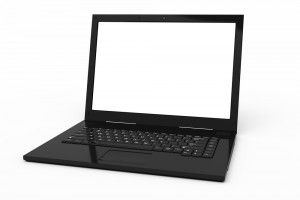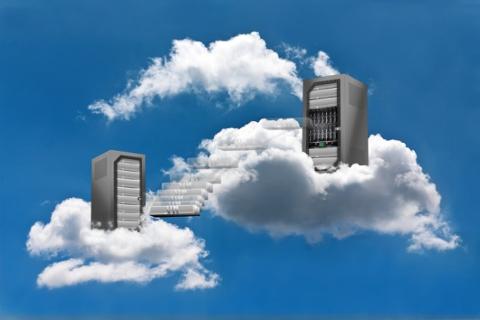 There are several problems with that, the first being that Dell does not have a good track record of executing well with their acquisitions (anyone remember Everdream and Silverback?). Another is that Wyse has been around a long time, and I assume they weren’t acquired because of their scintillating innovation. Add a large, bureaucratic organization on top of that, and you get 1+1 = -1 (my math mentor, Dr. Carl Ledbetter, must be rolling his eyes at that malfeasance). The good news? It is really cool to see the beginnings of efforts to make cloud dependency 100 percent possible. While I don’t want mandatory usage of 100 percent cloud forced upon me, I DO want the opportunity to be 100 percent cloud when possible, while maintaining the option to execute some of those massive CPU cycles on my Intel Core i7 laptop (with 8GB RAM no less). Give me a cloud and client where I can determine how much executes on the client versus the cloud, so I can make my local CPU sweat—or, alternatively, transform the cloud into my co-dependent life-partner in everything I do. And the apps? Ultimately, I don’t care. What matters is whether I can locate, use and leverage my data to the betterment of my life. Not too much to ask, eh? Ironically, Microsoft may be opening the way for the ‘data-is-king’ world, with the big bush in Win8 to HTML5 and Javascript in lieu of SilverLight and .NET. While Microsoft may have been dragged there kicking and screaming (due to huge wave of startups basing entire businesses and tools on them) nonetheless, client-side development never had it so good. Now let’s look at Dell’s Wyse acquisition—Dell has cheap storage (EqualLogic), compute (how they started), Cloud technology (Scalent, et al) and now a thin-client. Client-side execution consists of HTML5 and Javascript. Data is stored in the cloud. It may be springtime and smell of cherry blossoms, but I also scent the faint tinge of revolution in the air. Question is – can Dell execute? JD Marymee is the CEO and co-founder of Technology Innovations Group, an organization that drives disruptive innovation as a daily mission. As part of that mission, he advises clients such as Microsoft and Hitachi as well as numerous startups, facilitating connections with the investment community. Image: heromen30/Shutterstock.com
There are several problems with that, the first being that Dell does not have a good track record of executing well with their acquisitions (anyone remember Everdream and Silverback?). Another is that Wyse has been around a long time, and I assume they weren’t acquired because of their scintillating innovation. Add a large, bureaucratic organization on top of that, and you get 1+1 = -1 (my math mentor, Dr. Carl Ledbetter, must be rolling his eyes at that malfeasance). The good news? It is really cool to see the beginnings of efforts to make cloud dependency 100 percent possible. While I don’t want mandatory usage of 100 percent cloud forced upon me, I DO want the opportunity to be 100 percent cloud when possible, while maintaining the option to execute some of those massive CPU cycles on my Intel Core i7 laptop (with 8GB RAM no less). Give me a cloud and client where I can determine how much executes on the client versus the cloud, so I can make my local CPU sweat—or, alternatively, transform the cloud into my co-dependent life-partner in everything I do. And the apps? Ultimately, I don’t care. What matters is whether I can locate, use and leverage my data to the betterment of my life. Not too much to ask, eh? Ironically, Microsoft may be opening the way for the ‘data-is-king’ world, with the big bush in Win8 to HTML5 and Javascript in lieu of SilverLight and .NET. While Microsoft may have been dragged there kicking and screaming (due to huge wave of startups basing entire businesses and tools on them) nonetheless, client-side development never had it so good. Now let’s look at Dell’s Wyse acquisition—Dell has cheap storage (EqualLogic), compute (how they started), Cloud technology (Scalent, et al) and now a thin-client. Client-side execution consists of HTML5 and Javascript. Data is stored in the cloud. It may be springtime and smell of cherry blossoms, but I also scent the faint tinge of revolution in the air. Question is – can Dell execute? JD Marymee is the CEO and co-founder of Technology Innovations Group, an organization that drives disruptive innovation as a daily mission. As part of that mission, he advises clients such as Microsoft and Hitachi as well as numerous startups, facilitating connections with the investment community. Image: heromen30/Shutterstock.com The Year of the Non-Desktop?
‘I drank what?’ - Socrates, in the movie “Real Genius” For several years, we all looked forward to the year of the Linux Desktop. Even further back, while at Novell, I recall living the ‘year of the LAN’—a year that lasted at least from 1988 to 1995 (or thereabouts). Developers dreamt of taking all the wild user energy spent on PCs and redirecting it back to the glass house. Heck, 90 percent of configuration management is about creating an illusion of control in users’ minds, with the real control locked up in Group Policy and other management mechanisms. Enter the recent acquisition of Wyse by Dell. Now, I’m not paranoid—but if I were, I’d say that Dell has its sights on exerting a level of control over desktops via the cloud. And why not? After all, how nice would it be to have everything in the cloud, with a nice Internet-connected thin client as a portal to said cloud—a device where apps are always updated, and data backed up and safe?  There are several problems with that, the first being that Dell does not have a good track record of executing well with their acquisitions (anyone remember Everdream and Silverback?). Another is that Wyse has been around a long time, and I assume they weren’t acquired because of their scintillating innovation. Add a large, bureaucratic organization on top of that, and you get 1+1 = -1 (my math mentor, Dr. Carl Ledbetter, must be rolling his eyes at that malfeasance). The good news? It is really cool to see the beginnings of efforts to make cloud dependency 100 percent possible. While I don’t want mandatory usage of 100 percent cloud forced upon me, I DO want the opportunity to be 100 percent cloud when possible, while maintaining the option to execute some of those massive CPU cycles on my Intel Core i7 laptop (with 8GB RAM no less). Give me a cloud and client where I can determine how much executes on the client versus the cloud, so I can make my local CPU sweat—or, alternatively, transform the cloud into my co-dependent life-partner in everything I do. And the apps? Ultimately, I don’t care. What matters is whether I can locate, use and leverage my data to the betterment of my life. Not too much to ask, eh? Ironically, Microsoft may be opening the way for the ‘data-is-king’ world, with the big bush in Win8 to HTML5 and Javascript in lieu of SilverLight and .NET. While Microsoft may have been dragged there kicking and screaming (due to huge wave of startups basing entire businesses and tools on them) nonetheless, client-side development never had it so good. Now let’s look at Dell’s Wyse acquisition—Dell has cheap storage (EqualLogic), compute (how they started), Cloud technology (Scalent, et al) and now a thin-client. Client-side execution consists of HTML5 and Javascript. Data is stored in the cloud. It may be springtime and smell of cherry blossoms, but I also scent the faint tinge of revolution in the air. Question is – can Dell execute? JD Marymee is the CEO and co-founder of Technology Innovations Group, an organization that drives disruptive innovation as a daily mission. As part of that mission, he advises clients such as Microsoft and Hitachi as well as numerous startups, facilitating connections with the investment community. Image: heromen30/Shutterstock.com
There are several problems with that, the first being that Dell does not have a good track record of executing well with their acquisitions (anyone remember Everdream and Silverback?). Another is that Wyse has been around a long time, and I assume they weren’t acquired because of their scintillating innovation. Add a large, bureaucratic organization on top of that, and you get 1+1 = -1 (my math mentor, Dr. Carl Ledbetter, must be rolling his eyes at that malfeasance). The good news? It is really cool to see the beginnings of efforts to make cloud dependency 100 percent possible. While I don’t want mandatory usage of 100 percent cloud forced upon me, I DO want the opportunity to be 100 percent cloud when possible, while maintaining the option to execute some of those massive CPU cycles on my Intel Core i7 laptop (with 8GB RAM no less). Give me a cloud and client where I can determine how much executes on the client versus the cloud, so I can make my local CPU sweat—or, alternatively, transform the cloud into my co-dependent life-partner in everything I do. And the apps? Ultimately, I don’t care. What matters is whether I can locate, use and leverage my data to the betterment of my life. Not too much to ask, eh? Ironically, Microsoft may be opening the way for the ‘data-is-king’ world, with the big bush in Win8 to HTML5 and Javascript in lieu of SilverLight and .NET. While Microsoft may have been dragged there kicking and screaming (due to huge wave of startups basing entire businesses and tools on them) nonetheless, client-side development never had it so good. Now let’s look at Dell’s Wyse acquisition—Dell has cheap storage (EqualLogic), compute (how they started), Cloud technology (Scalent, et al) and now a thin-client. Client-side execution consists of HTML5 and Javascript. Data is stored in the cloud. It may be springtime and smell of cherry blossoms, but I also scent the faint tinge of revolution in the air. Question is – can Dell execute? JD Marymee is the CEO and co-founder of Technology Innovations Group, an organization that drives disruptive innovation as a daily mission. As part of that mission, he advises clients such as Microsoft and Hitachi as well as numerous startups, facilitating connections with the investment community. Image: heromen30/Shutterstock.com
 There are several problems with that, the first being that Dell does not have a good track record of executing well with their acquisitions (anyone remember Everdream and Silverback?). Another is that Wyse has been around a long time, and I assume they weren’t acquired because of their scintillating innovation. Add a large, bureaucratic organization on top of that, and you get 1+1 = -1 (my math mentor, Dr. Carl Ledbetter, must be rolling his eyes at that malfeasance). The good news? It is really cool to see the beginnings of efforts to make cloud dependency 100 percent possible. While I don’t want mandatory usage of 100 percent cloud forced upon me, I DO want the opportunity to be 100 percent cloud when possible, while maintaining the option to execute some of those massive CPU cycles on my Intel Core i7 laptop (with 8GB RAM no less). Give me a cloud and client where I can determine how much executes on the client versus the cloud, so I can make my local CPU sweat—or, alternatively, transform the cloud into my co-dependent life-partner in everything I do. And the apps? Ultimately, I don’t care. What matters is whether I can locate, use and leverage my data to the betterment of my life. Not too much to ask, eh? Ironically, Microsoft may be opening the way for the ‘data-is-king’ world, with the big bush in Win8 to HTML5 and Javascript in lieu of SilverLight and .NET. While Microsoft may have been dragged there kicking and screaming (due to huge wave of startups basing entire businesses and tools on them) nonetheless, client-side development never had it so good. Now let’s look at Dell’s Wyse acquisition—Dell has cheap storage (EqualLogic), compute (how they started), Cloud technology (Scalent, et al) and now a thin-client. Client-side execution consists of HTML5 and Javascript. Data is stored in the cloud. It may be springtime and smell of cherry blossoms, but I also scent the faint tinge of revolution in the air. Question is – can Dell execute? JD Marymee is the CEO and co-founder of Technology Innovations Group, an organization that drives disruptive innovation as a daily mission. As part of that mission, he advises clients such as Microsoft and Hitachi as well as numerous startups, facilitating connections with the investment community. Image: heromen30/Shutterstock.com
There are several problems with that, the first being that Dell does not have a good track record of executing well with their acquisitions (anyone remember Everdream and Silverback?). Another is that Wyse has been around a long time, and I assume they weren’t acquired because of their scintillating innovation. Add a large, bureaucratic organization on top of that, and you get 1+1 = -1 (my math mentor, Dr. Carl Ledbetter, must be rolling his eyes at that malfeasance). The good news? It is really cool to see the beginnings of efforts to make cloud dependency 100 percent possible. While I don’t want mandatory usage of 100 percent cloud forced upon me, I DO want the opportunity to be 100 percent cloud when possible, while maintaining the option to execute some of those massive CPU cycles on my Intel Core i7 laptop (with 8GB RAM no less). Give me a cloud and client where I can determine how much executes on the client versus the cloud, so I can make my local CPU sweat—or, alternatively, transform the cloud into my co-dependent life-partner in everything I do. And the apps? Ultimately, I don’t care. What matters is whether I can locate, use and leverage my data to the betterment of my life. Not too much to ask, eh? Ironically, Microsoft may be opening the way for the ‘data-is-king’ world, with the big bush in Win8 to HTML5 and Javascript in lieu of SilverLight and .NET. While Microsoft may have been dragged there kicking and screaming (due to huge wave of startups basing entire businesses and tools on them) nonetheless, client-side development never had it so good. Now let’s look at Dell’s Wyse acquisition—Dell has cheap storage (EqualLogic), compute (how they started), Cloud technology (Scalent, et al) and now a thin-client. Client-side execution consists of HTML5 and Javascript. Data is stored in the cloud. It may be springtime and smell of cherry blossoms, but I also scent the faint tinge of revolution in the air. Question is – can Dell execute? JD Marymee is the CEO and co-founder of Technology Innovations Group, an organization that drives disruptive innovation as a daily mission. As part of that mission, he advises clients such as Microsoft and Hitachi as well as numerous startups, facilitating connections with the investment community. Image: heromen30/Shutterstock.com 
